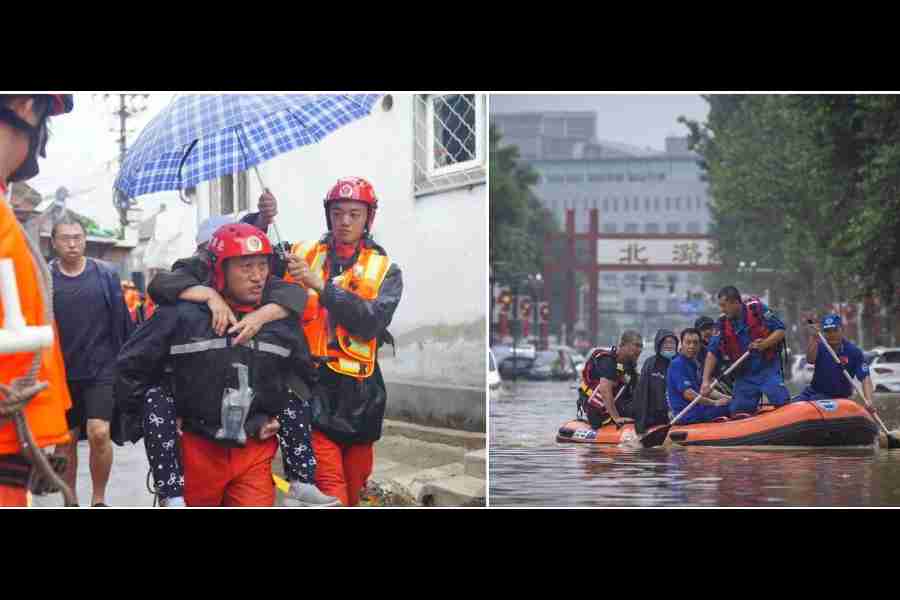For days, the rain came down in sheets, pounding Beijing and areas around it in what the government said was the heaviest deluge China’s capital had seen since record-keeping began 140 years ago.
When the extreme downpour finally stopped on Tuesday, most of Beijing had been spared the worst — but partly because officials made sure the floodwaters went elsewhere.
Officials in Hebei province, which borders Beijing, had opened flood gates and spillways in seven low-lying flood control zones to prevent rivers and reservoirs from overflowing in Beijing and the region’s other metropolis, Tianjin, state media said. The Communist Party leader of Hebei, Ni Yuefeng, said he ordered the “activation of flood storage and diversion areas in an orderly manner, so as to reduce the pressure on Beijing’s flood control and resolutely build a ‘moat’ for the capital”.
That move further inundated the adjacent city of Zhuozhou in Hebei, which had already been struggling to contain its own floods after a levee broke and a local river overflowed. Its streets and neighbourhoods turned into a brown, muddy lake, with water up to seven metres deep destroying homes and businesses.
Nearly a million people have been forced to evacuate in the province and in adjacent villages on the fringes of Beijing. In some areas, the flooding has disrupted power supplies as well as internet and mobile connections. Residents have posted online pleas for help finding hundreds of missing people.
China is not the only country that sometimes opens spillways to divert floodwaters from big cities to areas with fewer residents — an emergency, a last-resort measure aimed at reducing destruction and loss of life. The Morganza Floodway in central Louisiana, last opened in 2011, has 125 huge gates that can open to drain floodwaters coming down the Mississippi river away from New Orleans and into the sparsely populated, swampy Atchafalaya Basin.
But in China, the crisis in Zhuozhou has set off widespread anger, in part because help was initially slow to arrive in some areas, leaving many stranded. Survivors have also complained that they were not given ample warning about the discharge of floodwaters.
In particular, people have denounced what they perceive as a Hebei leadership that has been more interested in appeasing national leaders in Beijing than in safeguarding millions of Chinese citizens. Ni’s “moat” slur, seemingly insensitive to the losses endured by his residents, became a hashtag that quickly amassed more than 60 million views.
New York Times News Service










